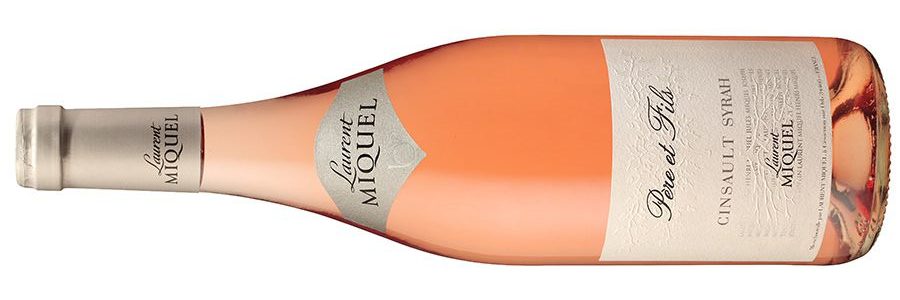The rosé season is upon us, and a glass of Laurent Miquel’s Pere et Fils pale-pink wine is an excellent choice for welcoming warmer weather or enjoying while sitting on the porch and watching the sunset.
Although Provence is France’s premier region for rosé, this dry, low-alcohol blend of Cinsault and Syrah red wine grapes from Languedoc is beautifully structured with fresh fruit flavors and a crisp, smooth finish that holds its own next to higher priced wines from the neighboring province.
The Miquel family has been working the vines on their Cazal Viel estate since 1791 and is now in its ninth generation, passing the vineyard from father to son, hence the name, Pere et Fils.
Laurent Miquel, the current winemaker, started out as an engineer with a masters degree in quality assurance working in the auto industry in Great Britain. It didn’t take him long to realize that he wanted to return to his roots and join the family business. He studied oenology, and in 1996, created his first vintage.
The wines show the influence of the region’s Mediterranean climate. Southern France summers are hot. Winters are mild, spring and fall rains are sparse and the vineyards are dried quickly by strong winds that help to protect the vines from disease and mold. Miquel’s wines also impart the flavors of the calcium-rich clay and sandy soils of the foothills of the Pyrenees Mountains.
Despite having more than 700,000 acres of vines and its status as the world’s largest and one of the oldest wine regions, Languedoc was known to relatively few wine drinkers, particularly in the United States, until recently. The region was regarded as a wine lake, an area that produces only cheap, bulk wines. The wines were no-name, no-frill “vin ordinaire” that cost less than water, Karen MacNeil writes in her book The Wine Bible.
But that changed 20 years ago, and the Miquel family was part of the movement to start producing quality, dominant, and single varietal wines. Today, Languedoc is not only one of the fastest growing areas in Europe, but it also has come to be recognized for its excellent wines.
The grapes for Pere et Fils are grown in the Saint-Chinian appellation on the Cazal Viel estate where the region’s first vineyards were planted by the Romans and cultivated and expanded by Benedictine monks until they were ousted by the French Revolution in 1789.
Just as Languedoc was little known in the American wine market, so too, until the last few years was dry, crisp rosé, not to be confused with syrupy white Zinfandel or the sweet Portuguese Mateus and Lancer’s rosés. In fact, I still occasionally get quizzical glances from companions and comments like “that’s too sweet for me” when I break out a bottle of rosé.
But that perception is changing. Pere et Fils rosé is 80 percent Cinsault, a grape that produces lighter and softer wines that are more aromatic and “charmingly” fruity than most reds, Jancis Robinson writes in The Oxford Companion to Wine.
Cinsault contributes freshness and soft texture to the blend, and the 20 percent Syrah adds dramatic color and delicious red fruit flavors, Laurent Miquel says in the tasting notes.
The wine is wonderful on its own or with appetizers, and it’s an excellent match with salads, grilled chicken or fish and as a balance for spicy foods.
Pere et Fils is widely available in the Pioneer Valley.
Suggestions of wines in the $10 range are always appreciated. Warren Johnston can be reached at raiseyourglassofwine@gmail.com. For past recommendations, go to raiseyourglassofwine.com.



